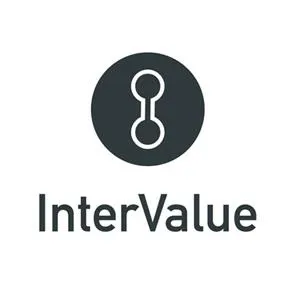
According to TechTarget, a consensus algorithm is simply a rule in computing, which is used to reach agreement on a data value or transaction in a distributed system. Such a mechanism is not only an integral part of such multi-agent networks, but also the foundation that guides every sequence of event.
At the core of the ongoing blockchain revolution is the core issue of consensus algorithm by which distributed systems are defined and identified. Basically, such rules specify legal plans of actions on the platforms. For instance, the algorithm may be like:
When "A" happens, then "B" will follow, and so on.
As a result, consensus algorithms are used to authenticate, validate, and monitor transactions on a block to prevent "double spend" and forks.
In other words, consensus mechanisms are designed to resolve problems of inconsistency in networks involving multiple undependable nodes or clients. This "problem of consensus" is inherent in all distributed systems including blockchain platforms. In fact, the evolution of blockchain from 2009, when Bitcoin was launched, has more to do with the introduction of different consensus algorithms on different platforms each having its own specific advantages and drawbacks.
Today, I want to take a deep dive into the attributes of the multiple consensus algorithms used on Intervalue Platform and examine how they compare with other protocols. However, before I do that, here is a quick recap of what Intervalue is all about.
Intervalue: Blockchain 4.0
Intervalue is the first 4th-generation blockchain project, according to the team of developers. It is designed to support the creation of industrial chains, development of sealable DApps, and as a revolutionary global value internet.
Among other things, Intervalue deploys an unusual infrastructure with outstanding key features. Further, the project has a formidable team of developers and consultants behind it. Another major excitement about Intervalue is its multiple consensus algorithms which are my main focus today.
Please, fasten your seat belts for a pleasure ride into the world of blockchains and consensus mechanisms.
Directed Acyclic Graph (DAG) Consensus for Intervalue 1.0DAG is a consensus algorithm that doesn't use blockchains and handle data transactions asynchronously. It is already being used by such platforms as IOTA and Byteball. The big advantage, so to say, with DAG is its ability to handle infinite number of transactions per second without hitches.
On Intervalue, transactions are condensed into Units and DAGs are plotted by linking these units together to form a chain. The catch is that a unit must confirm other units before linking them. The underlying principle is that, like a blockchain structure, each new linking unit in the graph has to confirm its parents units. If someone, for example, attempts to alter a unit in the network, he/she will have to harmonize with numerous other players, majority of who are total strangers.
Consequently, its blockless nature and data asynchronization reduce confirmation time and cost, and chance of breaching the security is extremely low.
HashNet Consensus for Intervalue 2.0HashNet is an improved DAG which consists of infinite directed edges and vertices. The new protocol was specially designed by Intervalue team and it incorporates 2-layer sharding based on HashGraph.
HashNet uses a hierarchical gossip topology and virtual voting strategy that supports both states-sharding and nodes-sharding. These facilitates super fast transactions between nodes in distinct shards to achieve concurrent TPS increments and faster confirmation time than HashGraph.
Intervalue switched over from DAG consensus to HashNet in June this year and the implementation has been a major milestone for the project. Similar designs cannot been seen in any other project and this has set the entire blockchain community buzzing ever since.
In a nutshell, HashNet represents a quantum leap-forward in terms of building practical infrastructures capable of supporting the development and application of scalable DApps to millions of users across the globe.
Byzantine Consensus with Verifiable Random Function (BA-VRF) for IntervalueBA-VRF uses a confirmable randomization to resolve the Byzantine Consensus Problem. It does this by using a random mathematical function to select a number of full nodes as attester nodes, and then determine the priority of these attester nodes.
Random selection of the few full nodes will be made every minute and only those attester nodes can send attester units which must adhere to the DAG Consensus inter-reference rule. Attester nodes get rewarded for sending attester units when those units have stabilized, and the process goes on and on like that repeatedly.
Key Benefits of Intervalue's Multiple Consensus in Comparison to Other AlgorithmsFrom earlier explanations, it can be deduced that Intervalue has deployed 3 different consensus mechanisms, in doubles:
BA-VRF & DAG- Intervalue 1.0 (April, 2018)
BA-VRF & HashNet- Intervalue 2.0 (June, 2018)
The key benefits of such a powerful combination of consensus could be seen in their combined advantages over other algorithms as illustrated below.
Consensus Algorithms | Energy and Ecological Efficiency | Scalability | Security | Transaction Speed | Decentralization | Affordability | Operation |
|---|---|---|---|---|---|---|---|
BA-VRF & HashNet | ✅ | ✅ | ✅ | 1,000,000 TPS | ✅ | ✅ | Transactions are performed asynchronously without blockchain |
PoW | ❌ | ❌ | ✅ | < 1000 TPS | ✅ | ❌ | Blocks are verified by mining |
PoS | ✅ | ❌ | ❌ | +10,000 TPS | ✅ | ✅ | Blocks are verified by minting |
DPoS | ✅ | ✅ | ❌ | ~100,000 TPS | ❌ | ✅ | Blocks are verified by voted authenticators |
HashGraph | ✅ | ✅ | ❌ | 250,000+ TPS | ✅ | ✅ | Asynchronous transactions without blockchain |
ConclusionIntervalue launched its testNet 2.0 in June and reached a whopping 1 million TPS under 3 shards, which exceeded the figure for other blockchain projects. This shows the team got their bearing right with those multiple consensus algorithms. People are eagerly expecting the subsequent iterations of the platform in v3.0 and v4.0 to see how it will perform. I will continue to update my esteemed readers on future developments of this exciting project.
USEFUL LINKS
Thank you for reading !
Questions regarding this innovative blockchain 4.0 are welcomed from our esteemed readers.







